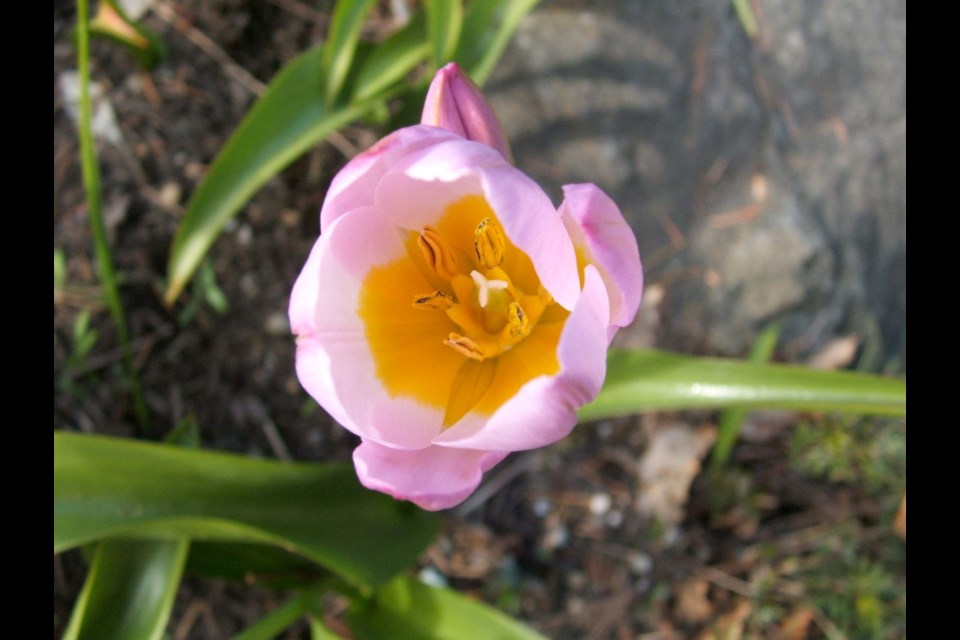Two plants in my garden routinely bloom in time for MotherŌĆÖs Day ŌĆö in most years. They are rock daphne and a species tulip called Lilac Wonder that has lived and flowered in the garden for decades.
The unusually warm April weather hastened bloom in both. They began flowering in mid-April. Then, later in the month, the weather turned cold enough to prolong the bloom period nicely.
Most of us have similar ŌĆ£markerŌĆØ plants that, in most years, flower or ripen in a set time period. Deviations from the usual pattern are reflections of the type of spring or summer we are experiencing. They remind us too of our need to continually adapt to NatureŌĆÖs variability.
For a little variety on this MotherŌĆÖs Day weekend, I give you reflections from other peopleŌĆÖs gardens.
Creative container gardens. Elizabeth Cull, former owner of the Dig This franchise, wrote in March, just as protective restrictions were starting up, schools were closing and group gatherings were being cancelled.
Now living in a condo, Elizabeth has a vegetable garden at a nearby allotment and a ŌĆ£decorativeŌĆØ garden on the condo deck. On the newly emerging threat, she noted that our gardens provide places of mental respite from anxiety.
ŌĆ£IŌĆÖve always said gardening is great for your mental health when you need a break from worry. Sowing seeds, transplanting, or planning a garden demands your attention and a setting aside of worries for a while. There are more than enough of these activities now to take our minds off this terrible virus.ŌĆØ
Elizabeth describes the difficulties in changing from open garden beds to pots on a deck in her pursuit of creating a pleasing ornamental display.
ŌĆ£One thing I learned that isnŌĆÖt different in a small deck garden: the importance of those workhorse plants that create the framework for the showy ones. Right now, the colour on my deck is provided by tulips, narcissus, hyacinths and primulas. The supporting characters are small evergreens and grasses that will continue to be easy on the eye after the spring bulbs have finished flowering and new showy plants like fuchsias, nasturtiums, hostas and salvias take centre stage.ŌĆØ
Thanks to Elizabeth for sharing that useful tip on arranging and managing an ornamental container garden. And to those individuals and families who have taken up gardening, for the first time or more seriously, in this stay-at-home era, youŌĆÖll be finding out personally how worries tend to evaporate into the soil as you work in a container or open garden.
Gardens on high. My friend CaronŌĆÖs home is a corner condo with two large decks. The east-facing one with mainly morning sun is ideal for cooler-growing plants like salad vegetables. The other one is exposed to the warmer afternoon sun and is ideal for her tomatoes, peppers, beans and fruiting plants.
She had a successful potted carrot planting last summer. In spring, as she prepared to plant them, we had a discussion about protecting the plants from the carrot rust fly, a pest that lays eggs in the ground beside carrot plants. Emerging larvae burrow into roots, creating blackened tunneling.
We discussed covering the planting with a piece of protective row cover. Then the obvious occurred to me. Where is CaronŌĆÖs deck garden? On the third floor. And what is known about this pest? ItŌĆÖs a weak flier, rarely flying over 60 cm high or for any considerable distance.
For that reason, a metre-high vertical fence of clear plastic sheeting or row cover fabric is sometimes used to surround and protect a carrot planting. This barrier is not as effective as row cover or insect netting arranged over a planting as soon as it is seeded. There is always the possibility of flies borne onto a planting on the wind.
However, it is unlikely that carrot rust flies could reach my friendŌĆÖs third floor condo ŌĆö unless somehow infested carrots were lying about, with maggots ready to pupate and develop into adult flies, or pupae over-wintered in the top soil of pots on the deck. All remote possibilities. Gardens up high are almost surely safe from carrot rust flies.
I wish the happiest of weekends to all who are occupied with mothering children, neighbours, friends, soils and plants on this very different MotherŌĆÖs Day.



